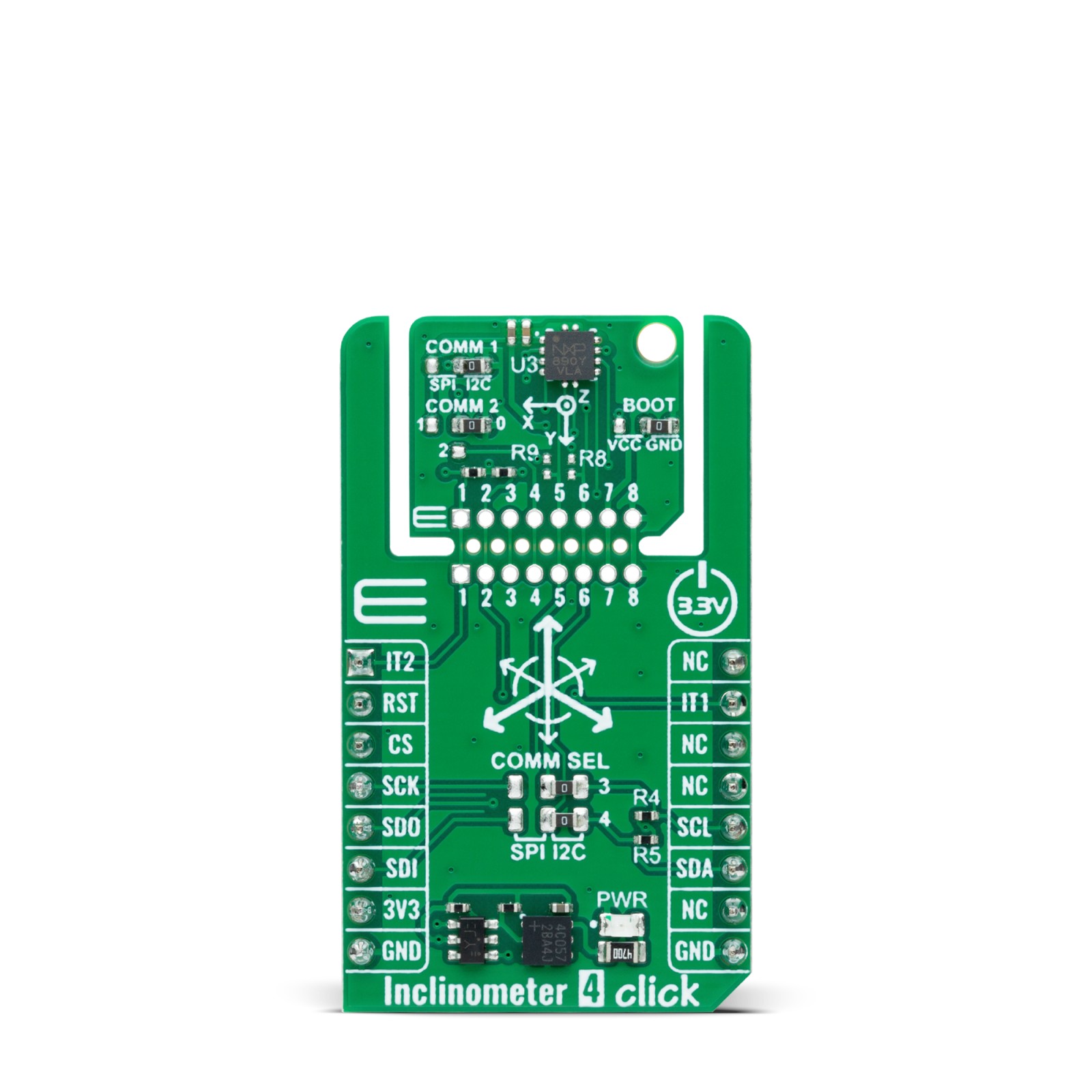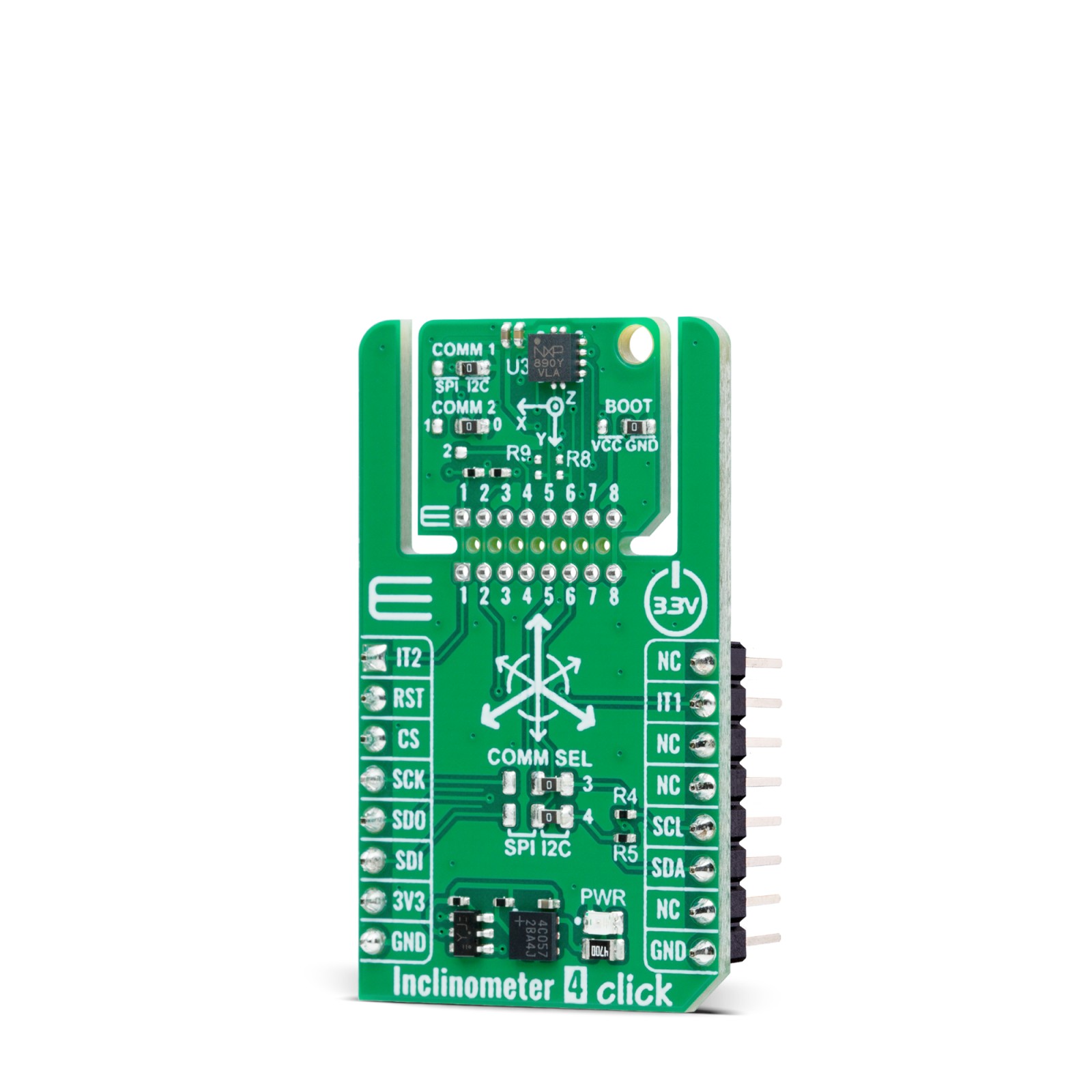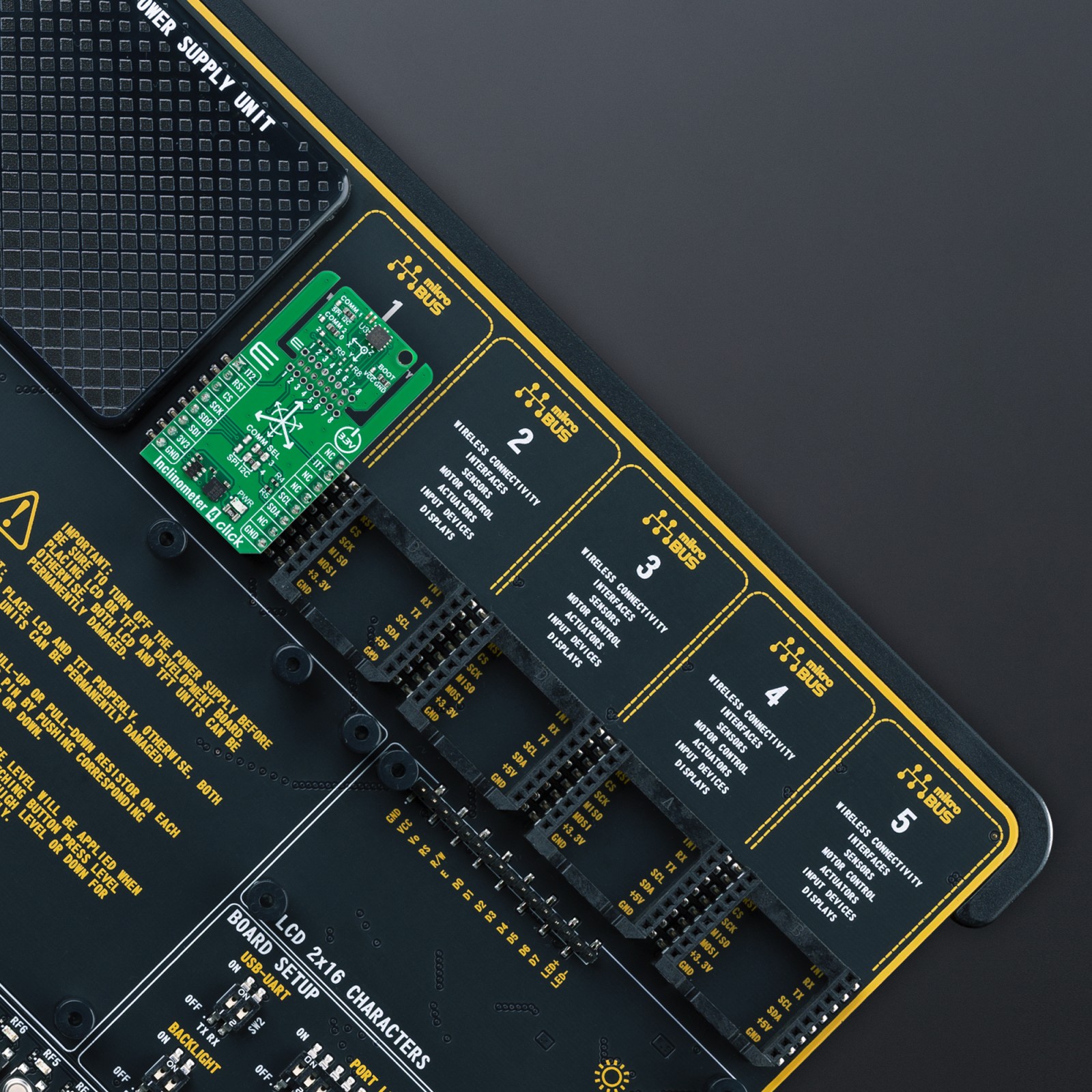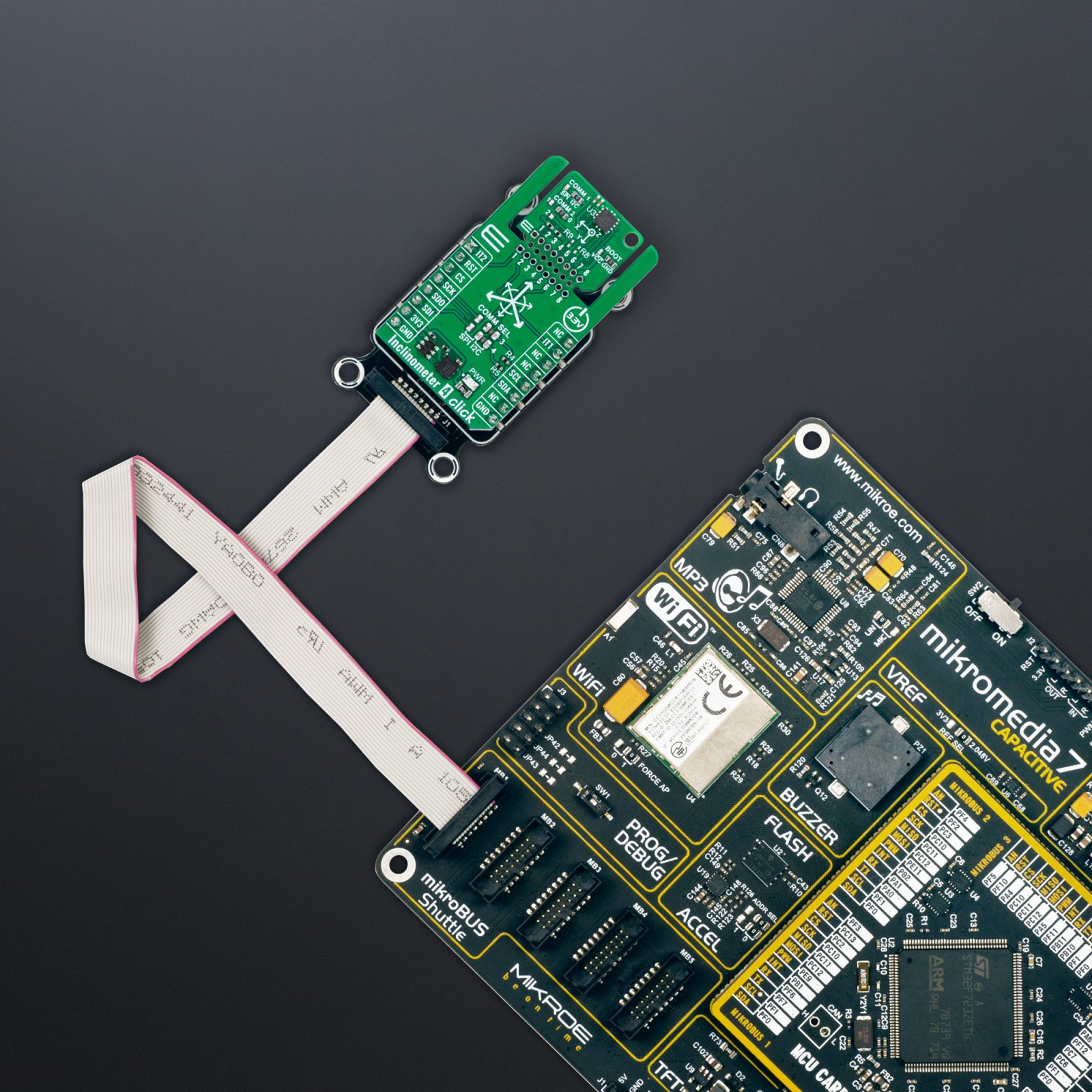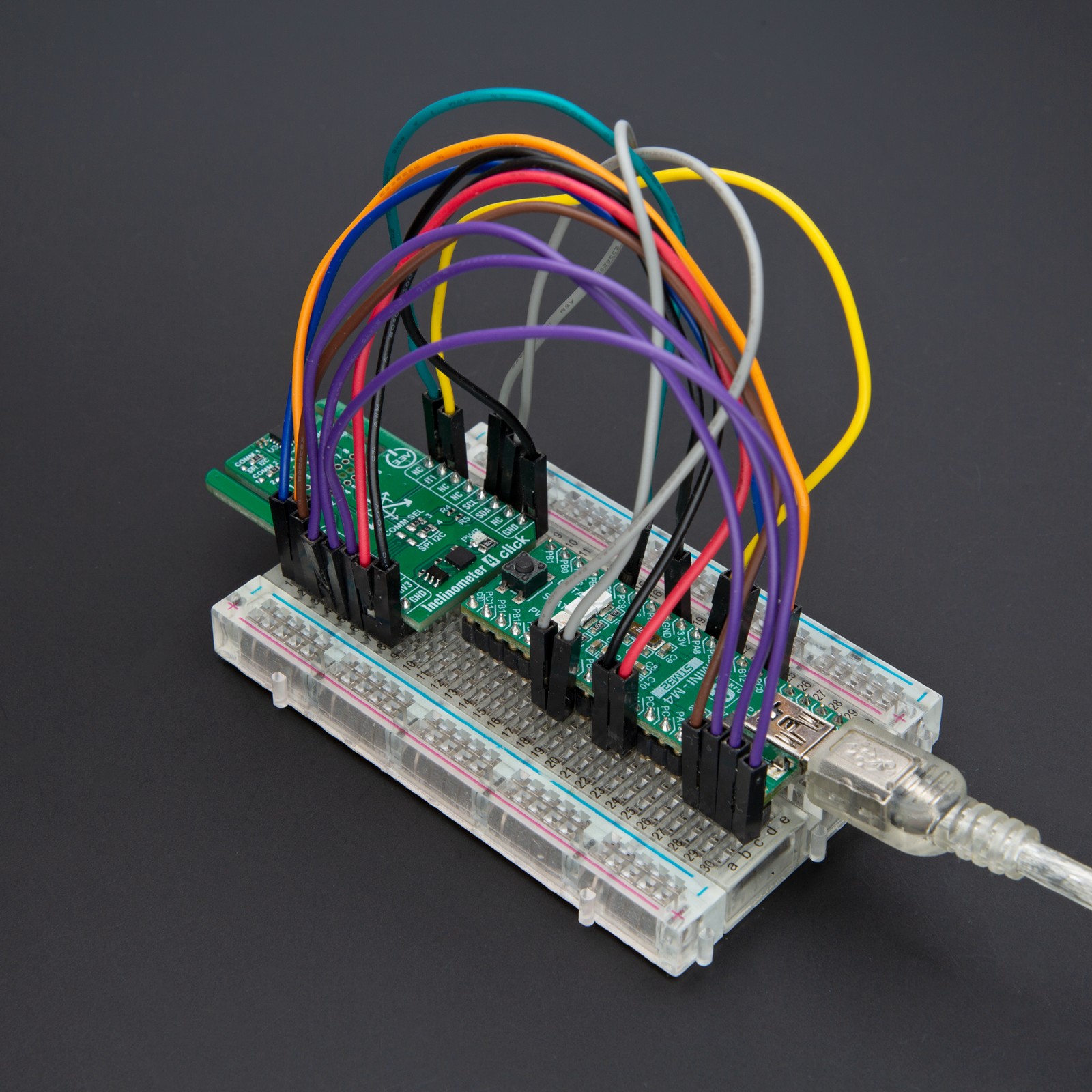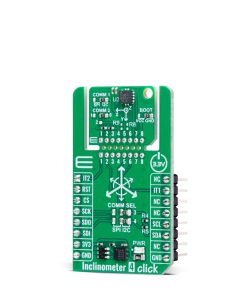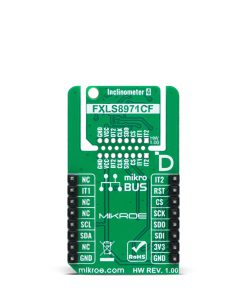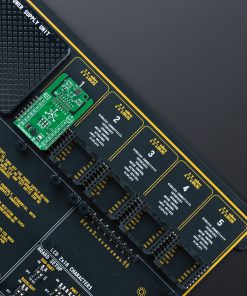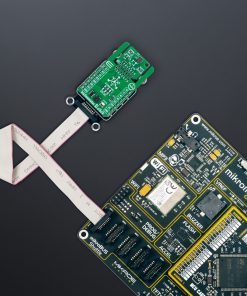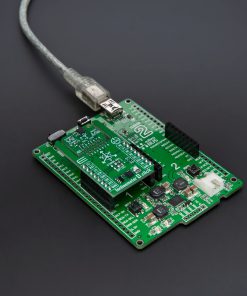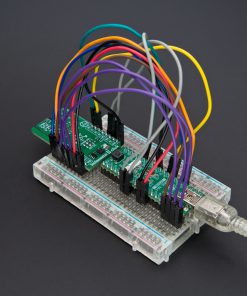Inclinometer 4 Click
R205.00 ex. VAT
Inclinometer 4 Click is a compact add-on board designed to measure angles of slope or elevation of an object concerning gravity’s direction. This board features the FXLS8971CF, a 3-axis low-g MEMS accelerometer from NXP Semiconductor. The FXLS8971CF offers high-performance and low-power modes, with selectable full-scale ranges of ±2/4/8/16g and features such as selectable output data rates, motion detection, and a 144-byte output data buffer. This Click board™ supports both I2C and SPI interfaces with a unique “Click Snap” feature for flexible implementation. It is ideal for industrial and medical IoT applications, including asset tracking, equipment monitoring, smart metering, and orientation detection.
Inclinometer 4 Click is fully compatible with the mikroBUS™ socket and can be used on any host system supporting the mikroBUS™ standard. It comes with the mikroSDK open-source libraries, offering unparalleled flexibility for evaluation and customization. What sets this Click board™ apart is the groundbreaking ClickID feature, enabling your host system to seamlessly and automatically detect and identify this add-on board, alongside a Click Snap feature introducing a new level of flexibility and ease of use.
NOTE: This Click board™ alongside FXLS8971CF, also represents reference design for FXLS8961AF.
Stock: Lead-time applicable.
| 5+ | R194.75 |
| 10+ | R184.50 |
| 15+ | R174.25 |
| 20+ | R167.69 |

